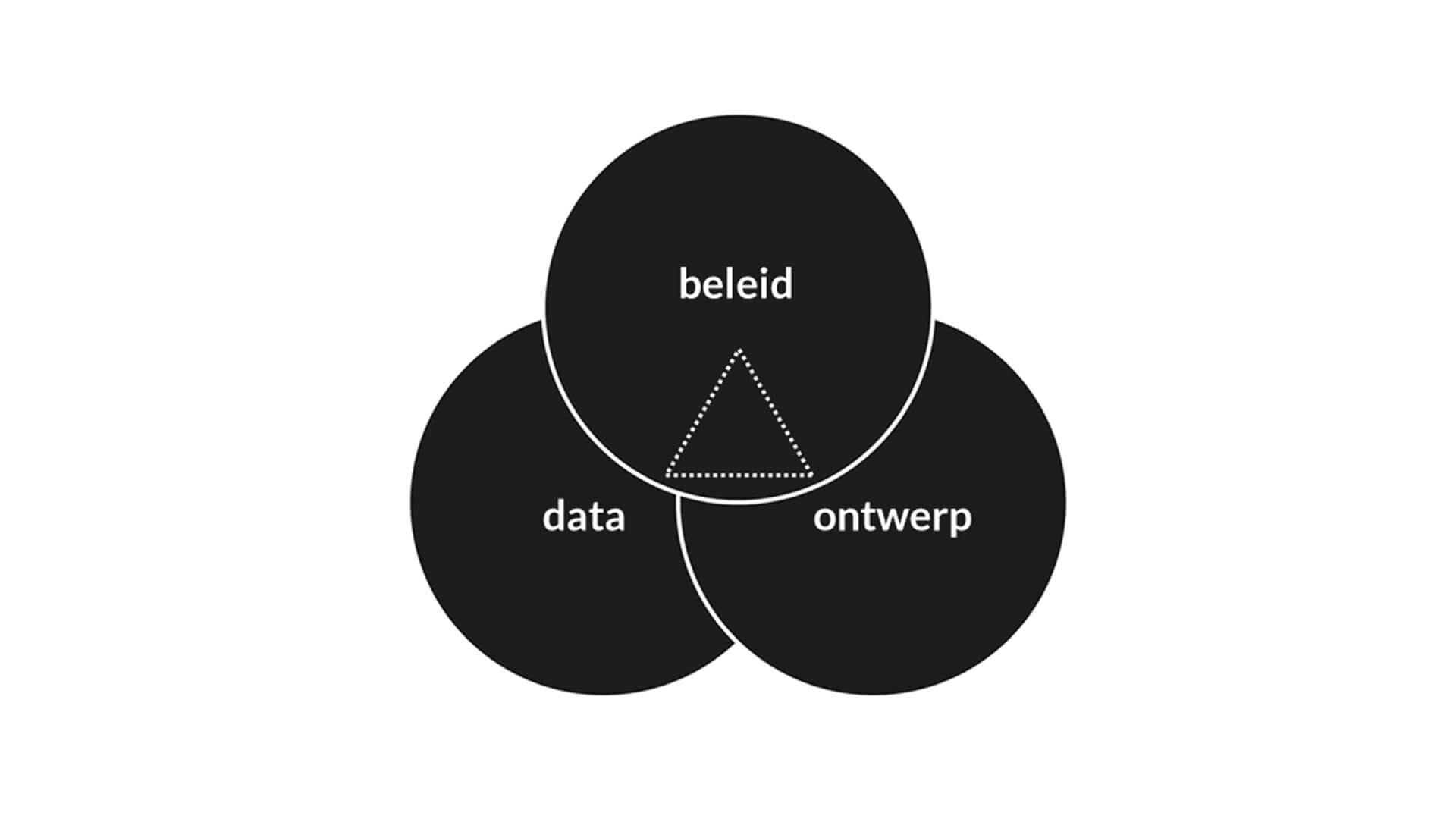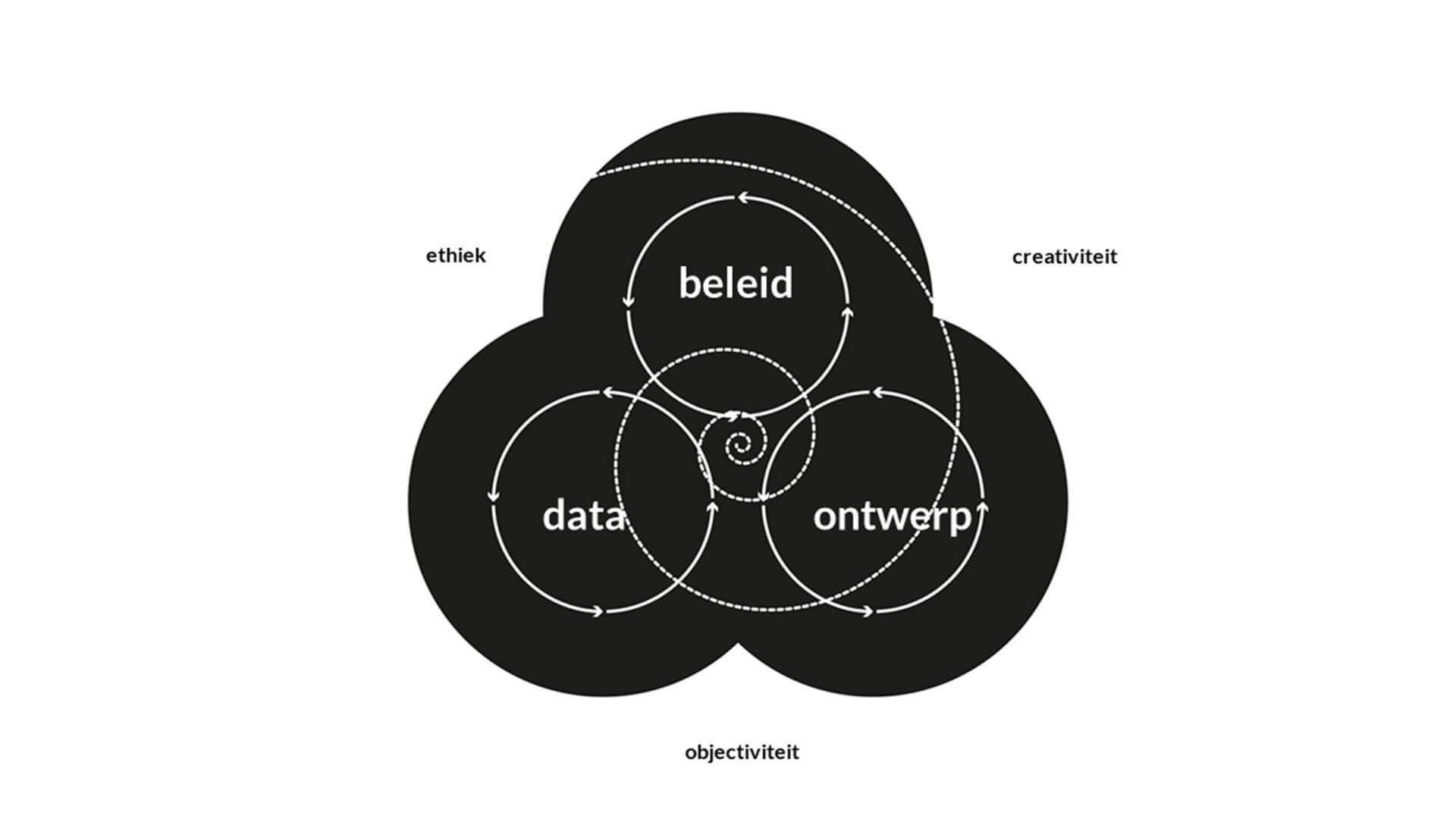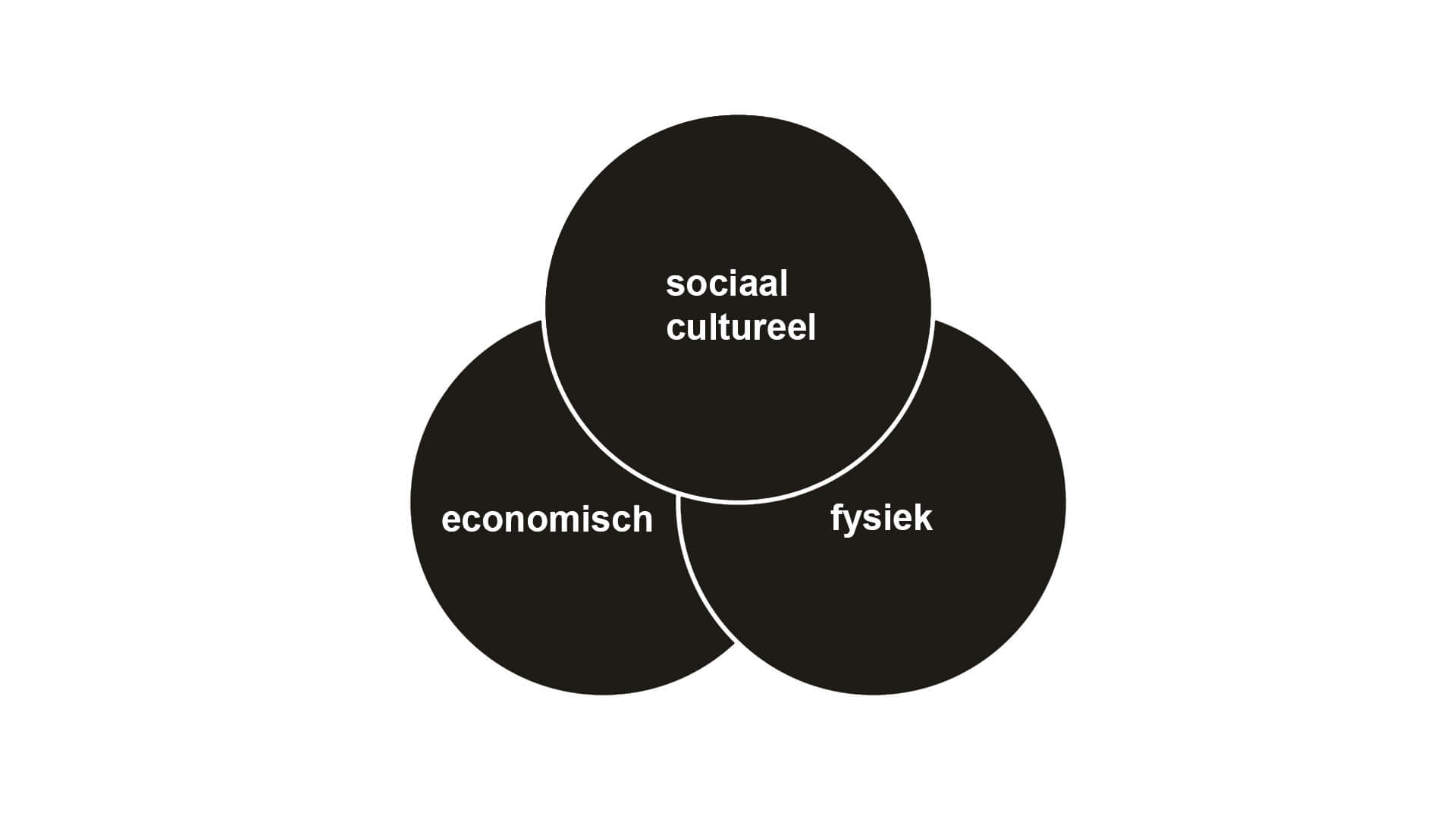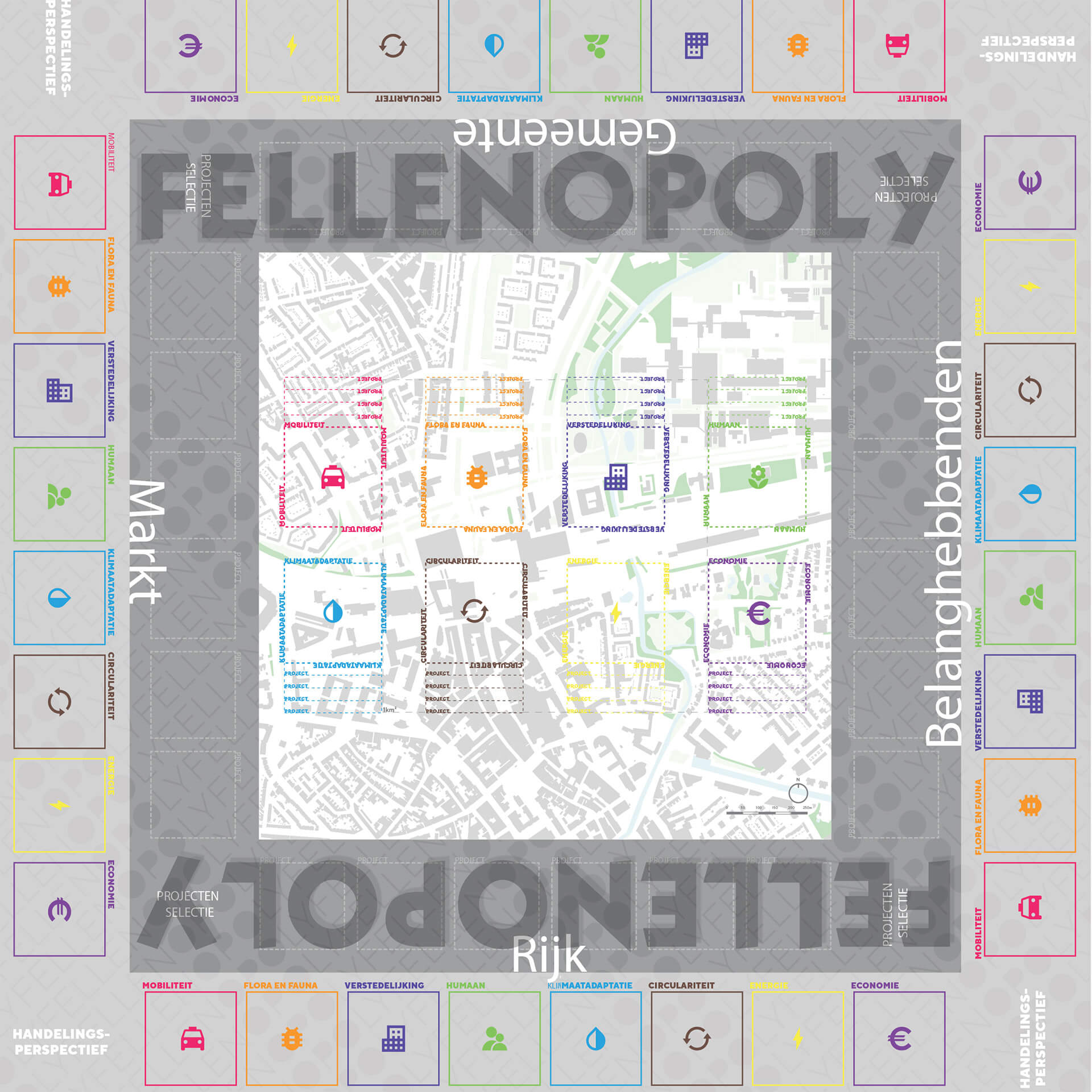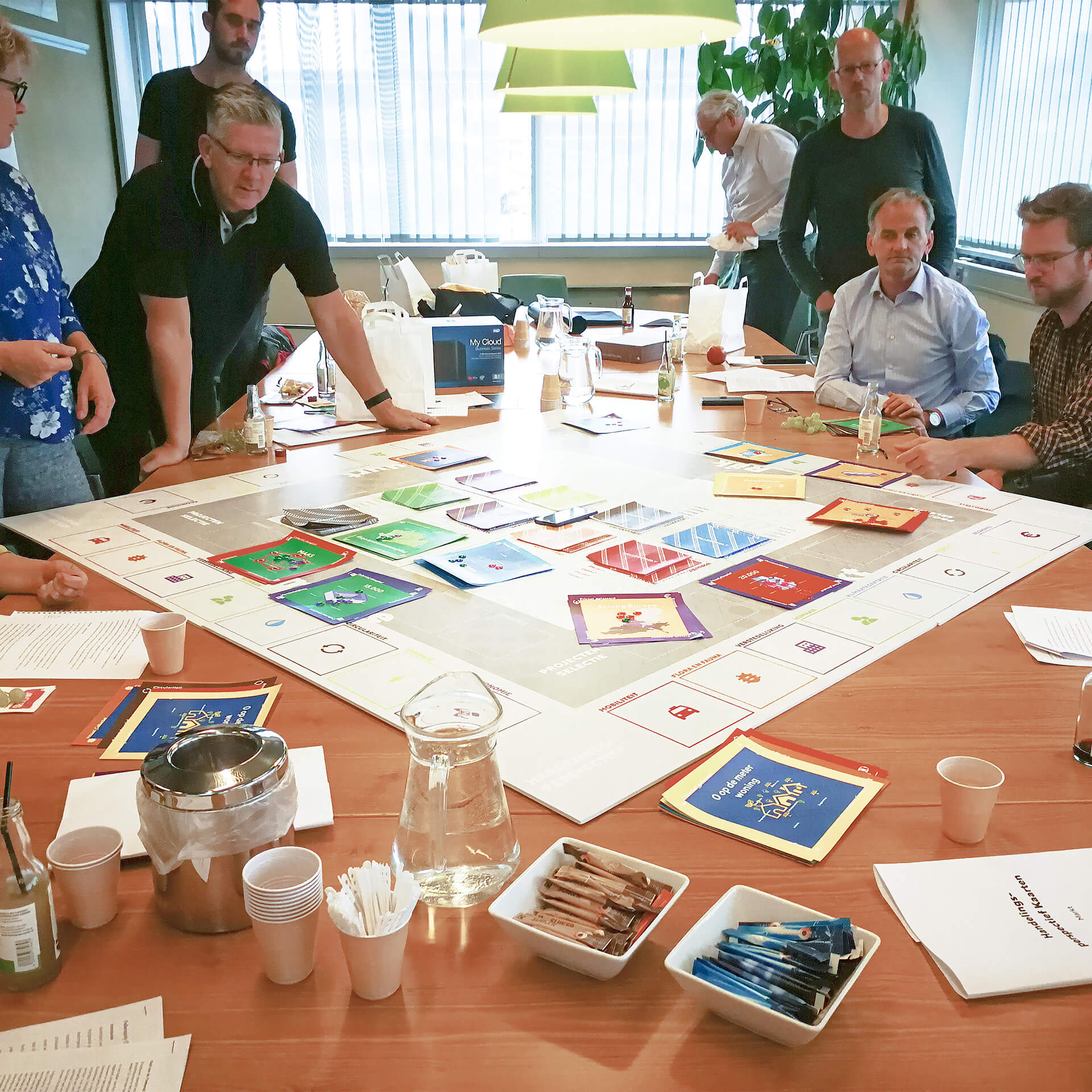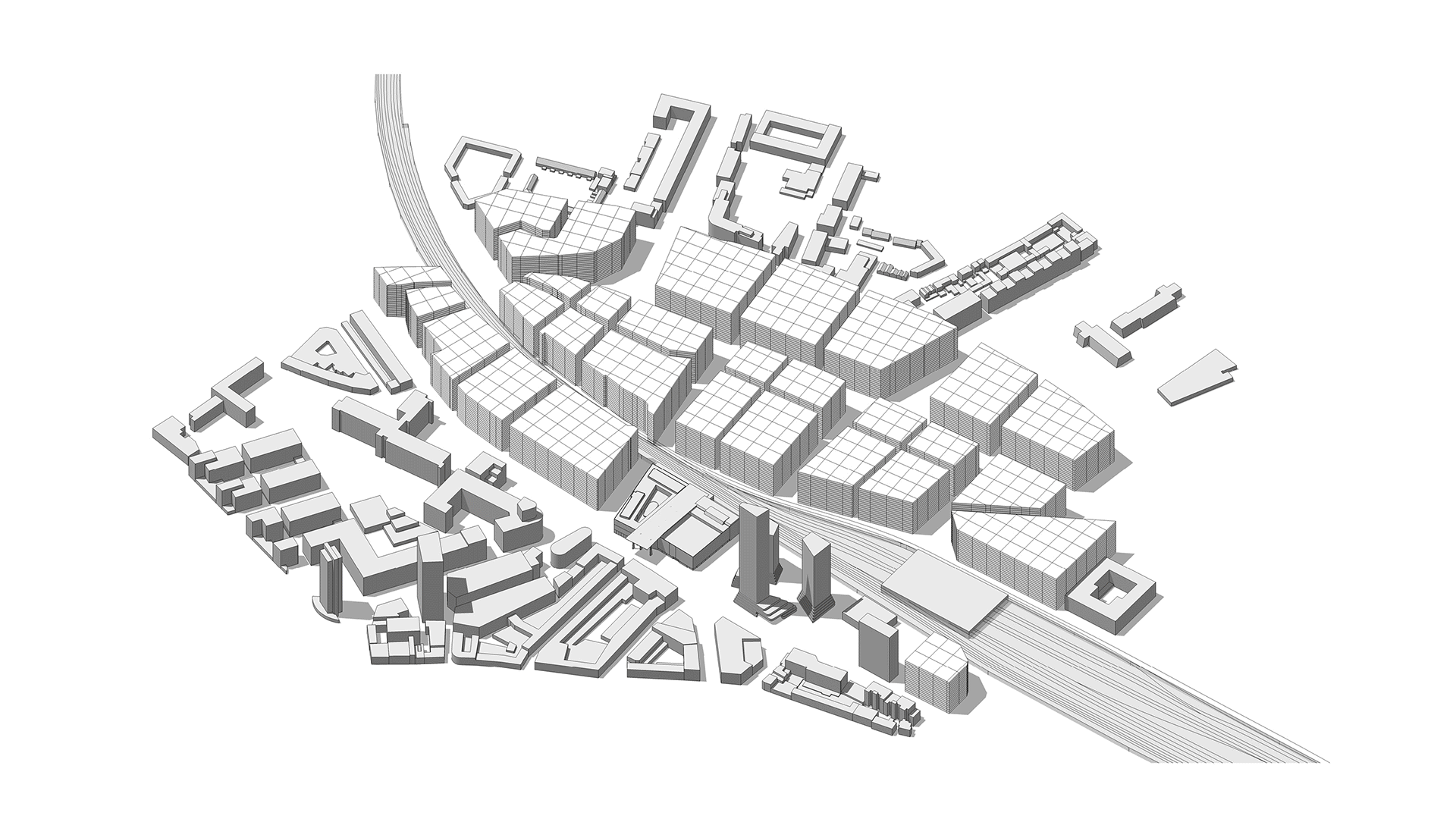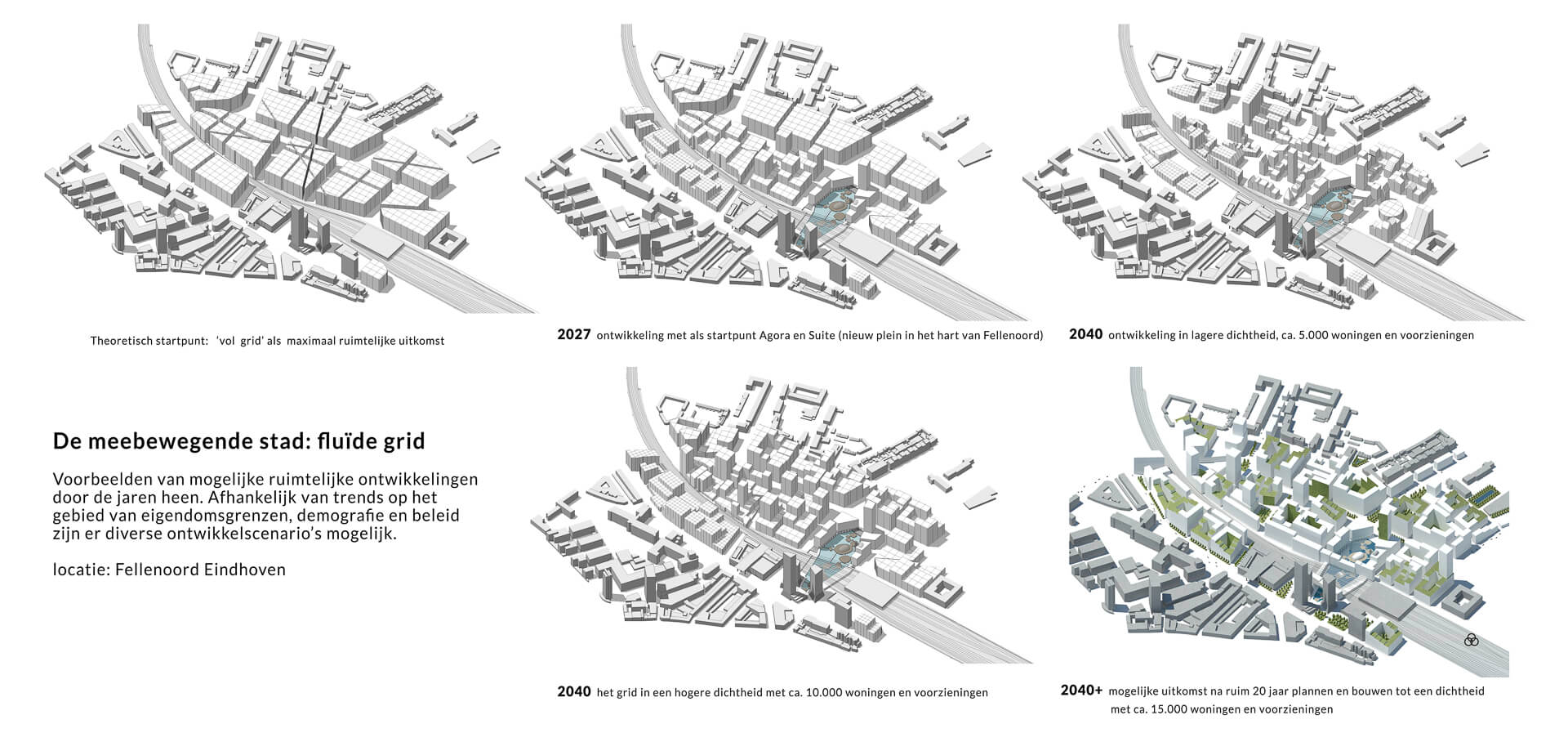Location
Eindhoven, Fellenoord
Description
Design study, strategies for a one-square-kilometer city. Initiative: BNA Research, Delft University of Technology, Ministry of Infrastructure and Water Management, Deltametropolis Association, and Atelier X of the Ministry of the Interior and Kingdom Relations.
TEAM TRIANGEL
TANGRAM Architekten, MUST, Urban Sync, Wessel Tiessen Bottum Up Urban development, Arcadis, Fakton, Becx & van Loon, VU Amsterdam
Completion
2019
PUBLICATie
The City of the Future. Ten design visions for five locations. Imagination for a square kilometer city
FLEXIBLE CITY
How does one develop a city in times of rapid and significant changes? For the design study ‘City of the Future’ (2018), Team Triangel – with Tangram as its chair – devised a radically different approach. Given the current pace of change, where we can barely anticipate five years ahead, rigid master plans become outdated before adoption. The systems of the previous century, shaped around ‘power’ and ‘intuition,’ fall short on all fronts.
Data and genuine participation
Urban development must be adaptable to changing circumstances. In our vision, the triangle of Data – Policy – Design forms the foundation for the future of urban planning. (Big) data become increasingly crucial in making informed choices and decisions, especially concerning influential factors like climate, economy, demographics, and mobility. Since raw data alone cannot be determinative and do not guarantee making sound choices, a second instrument is needed: participation. Shaping the city of the future is increasingly a combination of decision-making, forming coalitions, and addressing challenges. Policy that considers the interests of all involved parties, including non-professionals like residents, local businesses, and other stakeholders.
To facilitate this, Team Triangel developed a planning game to break down complex questions into manageable components.
During the game, participants discuss choices and their consequences, working together to form a coalition agreement that can serve as a basis for the developing program of requirements. Involving all stakeholders makes the design process more democratic and less susceptible to interests and emotions.
Data lay the groundwork for better policy, and the planning game provides the prerequisites for a better design. In an iterative process, players establish policy principles, which designers use to create an adaptable three-dimensional urban grid. This framework becomes a flexible basis for new plans and future changes.
Recommendations
-
The application of data has limitations, but it provides a more solid foundation for policy-making.
-
Involve all stakeholders from an early stage. Allow them to contribute to the prerequisites and program of requirements to garner broad support for the plan. Breaking down complex issues into manageable components makes the participation process more manageable.
- For transition issues, even at the local and regional levels, an integrated government approach is necessary to consider all interests.
Team Triangel focused on the test location Fellenoord in Eindhoven. The four other test locations were Amsterdam, Rotterdam, The Hague, and Utrecht.
GOLDEN TRIANGLE OF SUSTAINABLE URBAN PLANNING
Data are indispensable for an iterative and adaptive policy and design process. The factor of time plays a dual role: planning for the moment and flexibility over time.
URBAN TRANSITION GAME: FELLENOPOLY
The game allows various stakeholders to participate in the early stages of the process and contribute their ideas.
TEST LOCATION FELLENOORD
We have tested various scenarios over time. 2027: the urban grid begins to develop with a new square (‘Agora en suite’) as a starting point. 2040: the grid at a lower density of approximately 5,000 homes and facilities. 2040: the grid at a higher density with approximately 10,000 homes and facilities. 2050: potential outcome after over 20 years of planning and construction, achieving a density of approximately 15,000 homes and associated amenities

